The Portsmouth and Concord Railroad (later the Concord and Portsmouth Railroad) was a railroad in New Hampshire (United States) that existed under various names from 1845 to 1945.
The Portsmouth and Concord Railroad (later the Concord and Portsmouth Railroad) was a railroad in New Hampshire (United States) that existed under various names from 1845 to 1945.
By 1845 the state of New Hampshire had three north-south routes, all starting in Massachusetts and leading, respectively, to the capital of Concord, through southeastern New Hampshire to Maine by way of Dover, and along the coast via Portsmouth to Maine. However, a large gap existed between the Boston-Concord line and the Boston & Maine line through Dover. In response, two railway companies were founded in July 1845: the Portsmouth, New Market and Concord Railroad, and the Portsmouth, New Market and Exeter Railroad. Both were given the concession to construct and operate a rail line from Portsmouth to a point on the Concord Railroad between Manchester and Concord called Bow Junction. The companies merged on December 23, 1845, forming the Portsmouth and Concord Railroad. On July 10, 1846 the railroad was granted a license for a branch line from Hooksett to Suncook, then on June 23, 1848 a license for a branch line from Manchester to Candia.
The construction of the mainline from Portsmouth to Bow Junction began in Portsmouth in the summer of 1847. In August 1852 the approximately 50 miles (80 km) mainline was completed. The two branch lines were not initially built.
The route fell short of revenue expectations, and in 1855 declared bankruptcy. On May 1, 1855 the company took out a mortgage on their track, whereupon ownership passed to the creditors of the railway. On July 14 a new company named the Concord and Portsmouth Railroad was founded, and on September 1 the new company took over the railway.
However, the financial situation did not significantly improve, and on September 11, 1858 the financially strong Concord Railroad leased the Concord and Portsmouth Railroad company for five years, then on January 1, 1862 extended the lease to 99. This railroad company abandoned the Candia-to-Suncook section, and instead the two already-licensed branch lines were built. The closure coincided with the opening of the route to Manchester, the rest of the feeder route from Bow Junction to Suncook, and the license for the branch line to Hooksett.
The Concord Railroad was merged with other companies to form the Concord and Montreal Railroad on September 19, 1889, and the lease contract with the Concord & Portsmouth was transferred to this new company. On June 29, 1895, management of the route went to the Boston & Maine, having been leased to the Concord & Montreal in the meantime. The Boston & Maine bought a majority stake in the company in 1940 and achieved complete ownership four years later. In 1945 the Concord & Portsmouth dissolved. In 1982 the track between Rockingham Junction and East Manchester closed and is now owned by the state of New Hampshire and managed as a recreational trail. The Manchester to East Manchester segment was operated as an industrial spur and saw rail service until 1994. It was abandoned in 1995. The remaining section from Rockingham Junction to Portsmouth is now operated by Pan Am Railways.

Allenstown is a town in Merrimack County, New Hampshire, United States. The population was 4,707 at the 2020 census, up from 4,322 at the 2010 census. Allenstown includes a portion of the village of Suncook. Just over one-half of the town's area is covered by Bear Brook State Park.

Suncook is a census-designated place (CDP) in Merrimack County, New Hampshire, United States. The population was 5,501 at the 2020 census. Approximately two-thirds of Suncook is located in the town of Pembroke, with the remainder in Allenstown.
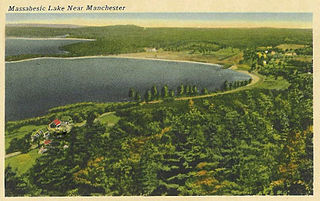
Auburn is a town in Rockingham County, New Hampshire, United States. The population was 5,946 at the 2020 census, up from 4,953 at the 2010 census.

Candia is a town in Rockingham County, New Hampshire, United States. The population was 4,013 at the 2020 census. The town includes the villages of Candia, Candia Four Corners and East Candia.
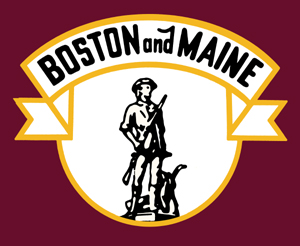
The Boston and Maine Railroad was a U.S. Class I railroad in northern New England. Originally chartered in 1835, it became part of what was the Pan Am Railways network in 1983.

Hooksett is a town in Merrimack County, New Hampshire, United States. The population was 14,871 at the 2020 census, up from 13,451 at the 2010 census. The town is located between Manchester, the state's largest city, and Concord, the state capital. A prominent landmark is Robie's Country Store, a National Historic Landmark and a frequent stop for presidential candidates during the New Hampshire primary.

Epping is a town in Rockingham County, New Hampshire, United States. The population was 7,125 at the 2020 census, up from 6,411 at the 2010 census.

Raymond is a town in Rockingham County, New Hampshire, United States. The population was 10,684 at the 2020 census. Part of Pawtuckaway State Park is in the north.

The Boston and Lowell Railroad was a railroad that operated in Massachusetts in the United States. It was one of the first railroads in North America and the first major one in the state. The line later operated as part of the Boston and Maine Railroad's Southern Division.
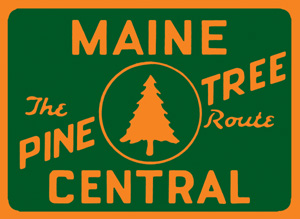
The Maine Central Railroad Company was a former U. S. Class I railroad in central and southern Maine. It was chartered in 1856 and began operations in 1862. By 1884, Maine Central was the longest railroad in New England. Maine Central had expanded to 1,358 miles (2,185 km) when the United States Railroad Administration assumed control in 1917. The main line extended from South Portland, Maine, east to the Canada–United States border with New Brunswick, and a Mountain Division extended west from Portland to St. Johnsbury, Vermont and north into Quebec. The main line was double track from South Portland to Royal Junction, where it split into a "lower road" through Brunswick and Augusta and a "back road" through Lewiston, which converged at Waterville into single track to Bangor and points east. Branch lines served the industrial center of Rumford, a resort hotel on Moosehead Lake and coastal communities from Bath to Eastport.
The Frederick E. Everett Turnpike, also called the Central New Hampshire Turnpike, is a toll road in the U.S. state of New Hampshire, running 44 miles (71 km) from the Massachusetts border at Nashua north to Concord. The Everett Turnpike is named for Frederick Elwin Everett, the first commissioner of the New Hampshire Department of Transportation.

The Fitchburg Railroad is a former railroad company, which built a railroad line across northern Massachusetts, United States, leading to and through the Hoosac Tunnel. The Fitchburg was leased to the Boston and Maine Railroad in 1900. The main line from Boston to Fitchburg is now operated as the MBTA Fitchburg Line; Pan Am Railways runs freight service on some other portions.

New Hampshire Route 101 is a state-maintained highway in southern New Hampshire extending from Keene to Hampton Beach. It is the major east–west highway in the southern portion of the state.
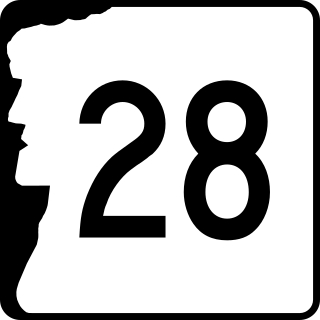
New Hampshire Route 28 is an 85.413-mile-long (137.459 km) north–south state highway in eastern New Hampshire. It connects the town of Ossipee in east-central New Hampshire with Salem on the Massachusetts border, while passing through Manchester, the largest city in the state.

The New England Southern Railroad is a Class III shortline railroad that operates out of Canterbury, New Hampshire, and serves industries in central New Hampshire, in the United States.
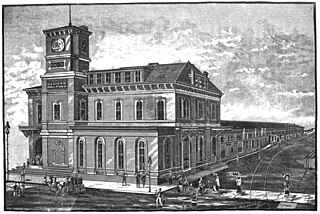
The Eastern Railroad was a railroad connecting Boston, Massachusetts to Portland, Maine. Throughout its history, it competed with the Boston and Maine Railroad for service between the two cities, until the Boston & Maine put an end to the competition by leasing the Eastern in December 1884. Much of the railroad's main line in Massachusetts is used by the MBTA's Newburyport/Rockport commuter rail line, and some unused parts of its right-of-way have been converted to rail trails.

The Suncook Valley Railroad was a short-line railroad in the United States, originating in Suncook, New Hampshire, and terminating in Barnstead, New Hampshire. It was operated as its own business entity since September 28, 1924, when control was regained from the Boston and Maine Railroad. Starting in 1869, the Suncook Valley RR was leased by the Concord Railroad, and subsequently Concord & Montreal Railroad, then finally the B&M. It served the Suncook River valley region in central New Hampshire, stopping in key communities such as Epsom, Allenstown and Center Barnstead.

The Northern Railroad was a U.S. railroad in central New Hampshire. Originally opened from Concord to West Lebanon in 1847, the Northern Railroad become part of the Boston and Maine system by 1890.

The Portsmouth, Great Falls and Conway Railroad (PGF&C) is a former rail line between Rollinsford and Intervale, New Hampshire, in the United States. At Rollinsford, the line connected to other lines to provide service between the White Mountains and coastal cities such as Boston. At Intervale, it connected to the Mountain Division of the Maine Central Railroad. The rail line takes its name from the city of Portsmouth, near its southern terminus; the city of Somersworth ; and the town of Conway, near its northern terminus. Today, the infrastructure of the former PGF&C is owned by different entities, including the State of New Hampshire, the Conway Scenic Railroad, and the New Hampshire Northcoast Corporation. Some segments are still operated as freight or heritage railways, while other segments are being maintained as rail trails.